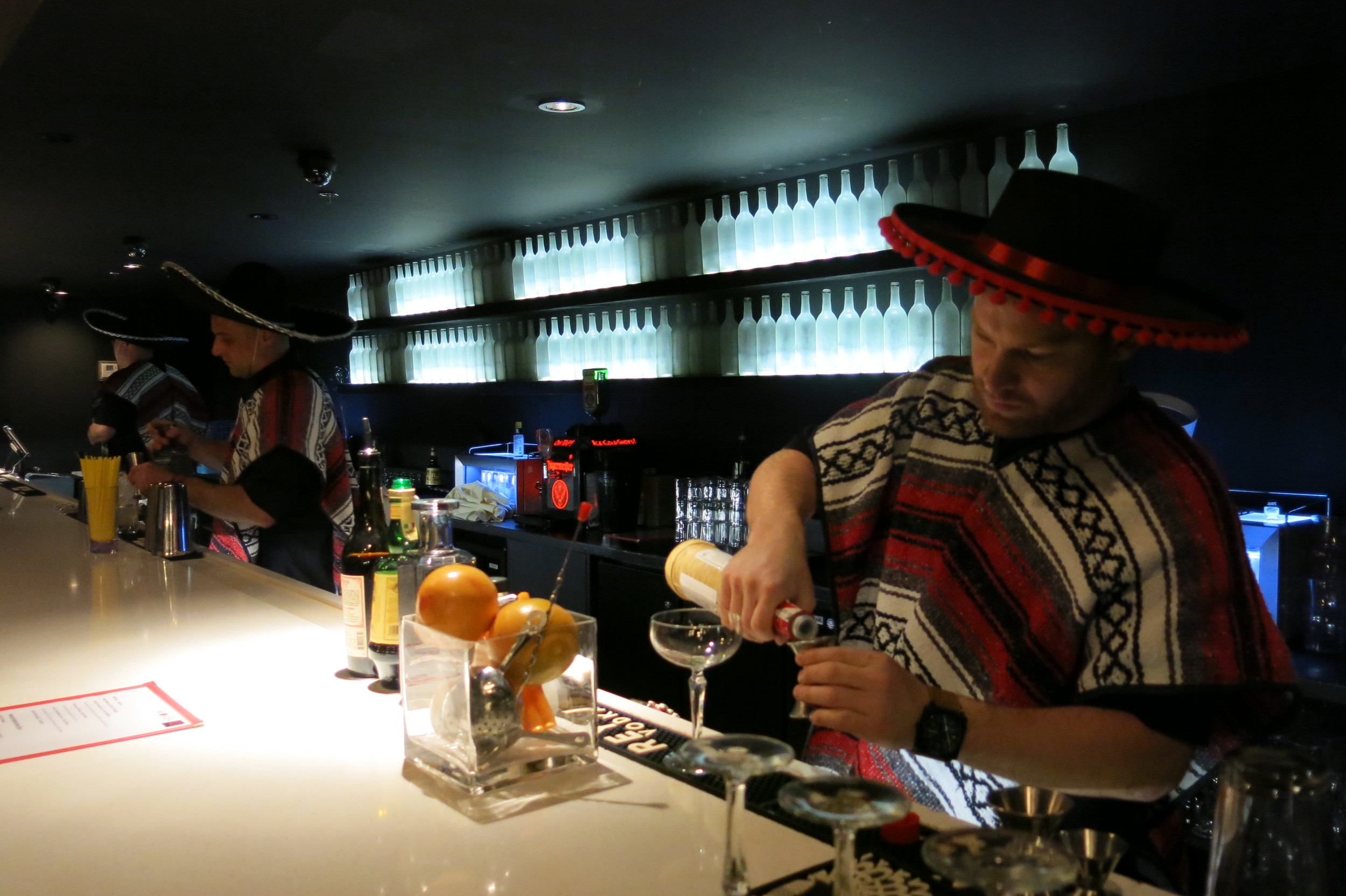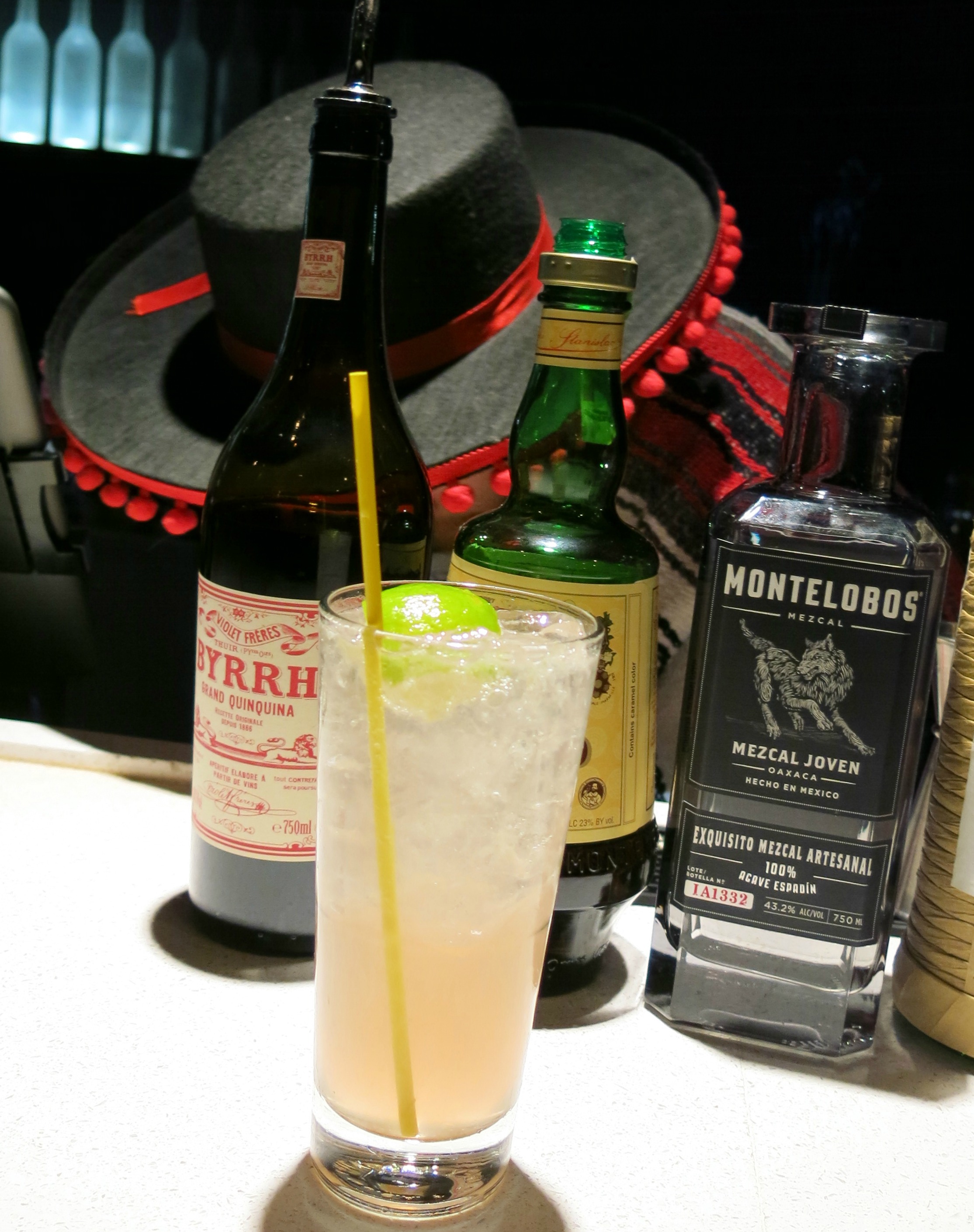An Evening With Montelobos Mezcal...and the Three Amigos
The year is 1916. The rural village of Santo Poco, Mexico, is being extorted by a cruel bandit and his obsequious cohorts. The people of the village have long since abandoned hope and resigned themselves to their plight. But when one of the villagers, a young woman named Carmen, sees a silent film depicting the exploits of three wealthy Spanish landowners who fight for justice and the good of the common man, she hatches a desperate plot to save Santo Poco. Unaware that the on-screen heroes are merely actors, not true crusaders, Carmen dispatches a telegram requesting their help and promising a handsome reward. The telegram reaches the actors, who have recently been fired by their studio over a salary dispute. Interpreting the telegram as an invitation to stage a performance, the three eagerly accept and head to Santo Poco – not realizing they are walking into a real-life battle with a group of ruthless thugs led by the notorious outlaw El Guapo.
This, my friends, is the premise for that enduring classic of 1980s cinema, the ¡Three Amigos!, a film I was fortunate to become reacquainted with last week when Cambridge’s Moksa screened it as part of a promotional event for Montelobos Mezcal. And while it would be difficult to upstage the hijinks and heroics of Lucky Day (Steve Martin), Dusty Bottoms (Chevy Chase), and Ned Nederlander (Martin Short), the true stars of the evening were bartenders Curtis McMillan, Brian Mantz, and Tyler Wolters.
First, a few words about mezcal. Just as the Amigos are wrongly perceived as valiant crusaders, mezcal often suffers from a case of mistaken identity. Many people think the spirit is a type of tequila, when in fact, tequila is a type of mezcal. True, both are made in Mexico and originate from the agave plant, but the similarities end there. For starters, they are largely produced in different regions of Mexico. And tequila, by law, is made solely from the blue agave plant, while mezcal can be made from a plethora of agave plants.
But the most obvious difference between the two spirits is the flavor profile. Mezcal is famous – or infamous – for its distinctive smoky essence. This comes from roasting the piña, which is the heart of the agave plant. The traditional production method involves roasting the piñas in an underground pit lined with volcanic rock and wood, covered with earth and logs. The piñas get smoked over the course of a few days before being mashed, fermented, and distilled. It’s a process that has been industrialized over the years, but smaller, craft distilleries, like Montelobos, have returned to this time-honored, handcrafted approach.
The result is a spirit that nicely balances bitter and sweet flavors, with notes of vanilla, pepper, agave, even citrus. The signature smoky essence is milder and more natural than I’ve encountered in other mezcals; not harsh or overpowering.
Although mezcal is typically consumed neat in Mexico, mixed drinks were the order of the night at Moksa. Each of the three featured cocktails, with names inspired by the evening’s film, was designed by one of the sombrero- and poncho-clad amigos working behind the bar.
First up was “Son of a Motherless Goat,” made by Moksa’s bar manager, Tyler Wolters. This mix of Montelobos, Byrrh (a quinine-flavored, fortified wine), Montenegro, maraschino liqueur, and coffee bitters, finished with a twist of orange, was like a spicy, smoky Manhattan. The coffee bitters added a subtle anise flavor, while the orange peel contributed some bitterness and citrus notes.
Brian Mantz is the bar manager at Carrie Nation, and his “Plethora of Piñatas” combined Montelobos, Lillet Blanc, a grapefruit cordial, and lime. Light and refreshing, it was like a lemonade with a subtle, smoky bite.
As Vice President at the Boston chapter of the United States Bartending Guild, you could say Curtis McMillan knows a thing or two about cocktails. This whole event, incidentally, was his brainchild, part of the local launch for Montelobos. Curtis’s “Invisible Swordsman” cocktail may have been the most complex of the night, with Montelobos, Cherry Heering, Solerno blood orange liqueur, grapefruit, agave, and allspice. Despite combining so many boldly flavored ingredients, it was well balanced, with a big sweetness up front.
While the hombres behind the bar whipped up some potent bebidas, the rest of us watched the tense drama unfold on screen. When the Three Amigos ride into Santo Poco, the villagers aren’t sure what to make of their flashy, would-be saviors. But the trio is lionized after an apparent victory over El Guapo’s bemused minions, and a night-long fiesta ensues. The celebration is short-lived, however, and so is the villagers’ adulation. El Guapo himself arrives the next day; unmoved by the Amigos’ histrionics, he exposes the heroes as frauds, sacks Santo Poco, and kidnaps the beautiful Carmen.
Disgraced, the Amigos are met with a choice – return to Hollywood and try to win back their acting jobs; or, in a richly ironic example of life imitating art, become the valiant crusaders they once portrayed. Facing impossible odds, and hampered by their own bumbling ineptitude and dearth of real-life combat skills, the Amigos make a pact to rescue the girl, save the village, and restore their lost dignity.
No Mexican-themed event would be complete without the spicy food for which our neighbor to the south is so well known, and Moksa’s menu consisted of a few small plates of traditional Mexican cuisine with an Asian flair. First up was a delicious tamale stuffed with ground pork and kimchi, topped with Kochujang, a Korean pepper sauce.
Even the Three Amigos never got tacos like this – spicy tuna, served in nori (seaweed) chips and topped with guacamole and a tangy mango salsa.
Rice and beans are traditional staples of Mexican cuisine, but Moksa’s version spiced them up with curry.
There was even dessert – a bite-size hors d’oeuvre of pineapple, cherry, and cheese, three elements that worked surprisingly well together.
You know what else works well together? Comedy and alcohol (who knew?). I hadn’t seen the ¡Three Amigos! in years, but I think it holds up pretty well. Whether the drinks colored my opinion at all, I can’t say.
And while I was pleased to revisit this classic 80s farce, I was happier still to discover the merits of an artisinal mezcal. I confess, I’d always thought of mezcal as liquefied smoke that may or may not have a worm floating around in it (that’s a whole other topic; and no, you definitely won’t find one in Montelobos). But each of the evening’s cocktails was distinct in its flavor and complexity, and together they demonstrated mezcal’s surprising versatility.
Mezcal has a long way to go before it approaches anything close to the popularity of its distant cousin, tequila. But as Lucky Day wisely explained to the Santo Pocoans, “All of us have an El Guapo to face.” Small-batch mezcals like Montelobos are helping the spirit gain new respect and broader recognition; the support of a major distributor like William Grant & Sons doesn’t hurt, either. It’s already becoming a chic alternative to tequila, and as mezcal finds its way into well-conceived cocktails, its appeal may become as strong as its legendary smoky flavor.
* * * * * * * * * * * * *
Copyright © Boston BarHopper. All Rights Reserved.















